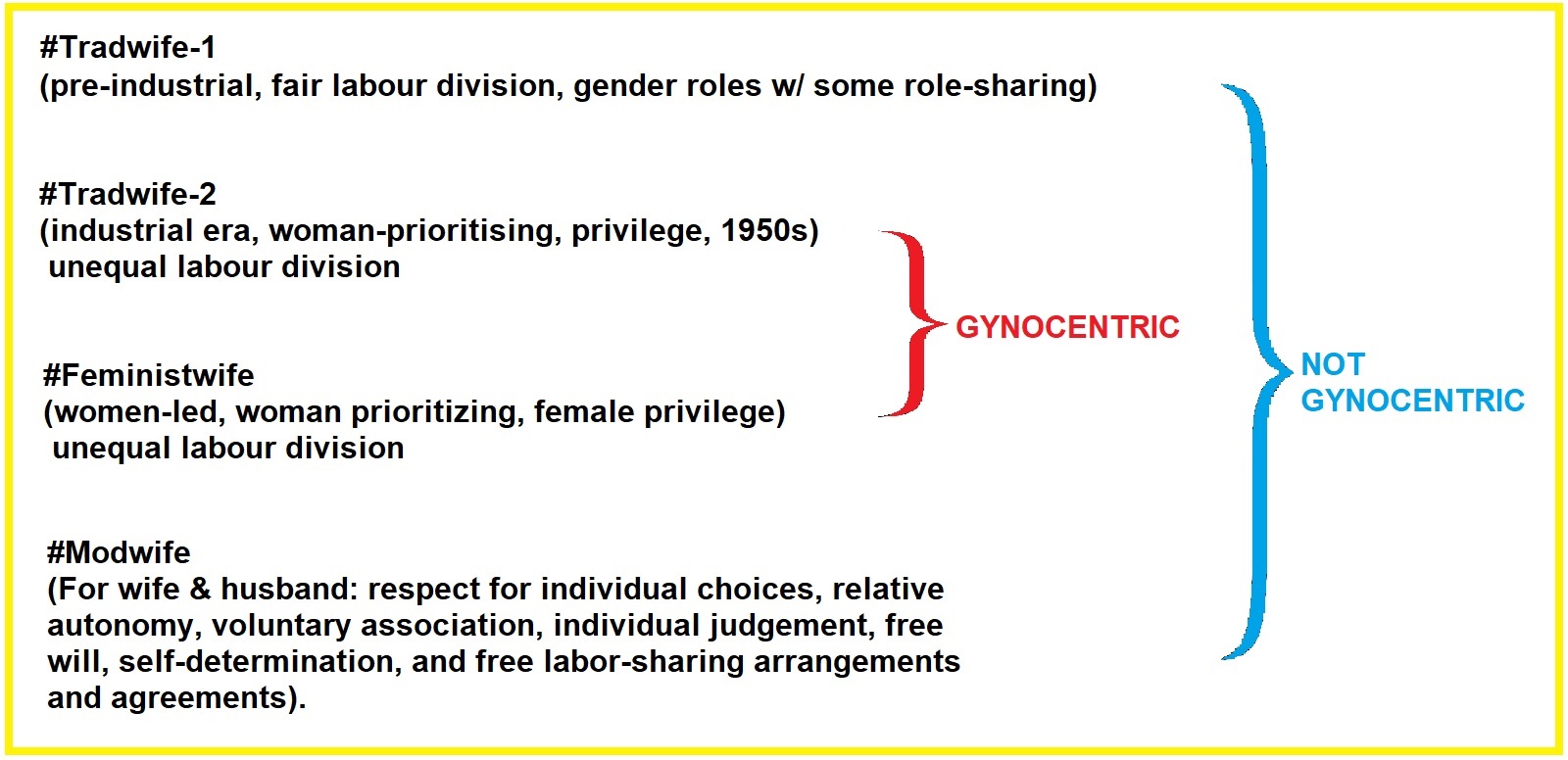Difference between revisions of "Tradwife"
| Line 1: | Line 1: | ||
| − | A '''Tradwife''' refers to a woman who fulfills a traditional gender role, and is based on two variations of the theme: '''#Tradwife-1''' is based on equitable labor division and commensurate value of husband and wife, and '''#Tradwife-2''' which is based on Western middle-class femininity of the mid twentieth century which values wives' security and comfort more highly than that of husbands, as symbolized in the 1950s housewife.<ref>'Tradwife' in Wiktionary</ref><ref>[https://www.urbandictionary.com/define.php?term=tradwife 'Tradwife' in Urban Dictionary]</ref> TradWives represent a growing movement of women who promote ultra-traditional gender roles, advocating or |
+ | A '''Tradwife''' refers to a woman who fulfills a traditional gender role, and is based on two variations of the theme: '''#Tradwife-1''' is based on equitable labor division and commensurate value of husband and wife, and '''#Tradwife-2''' which is based on Western middle-class femininity of the mid twentieth century which values wives' security and comfort more highly than that of husbands, as symbolized in the 1950s housewife.<ref>'Tradwife' in Wiktionary</ref><ref>[https://www.urbandictionary.com/define.php?term=tradwife 'Tradwife' in Urban Dictionary]</ref> TradWives represent a growing movement of women who promote ultra-traditional gender roles, advocating or enacting traditional gender roles as a way to reverse the ill effects of feminism. These two models, argue the advocates of traditional gender roles, create a delicate but eminently workable balance that has stood the test of time. |
== Tradwife-1 (non-gynocentric) == |
== Tradwife-1 (non-gynocentric) == |
||
Revision as of 00:14, 24 March 2020
A Tradwife refers to a woman who fulfills a traditional gender role, and is based on two variations of the theme: #Tradwife-1 is based on equitable labor division and commensurate value of husband and wife, and #Tradwife-2 which is based on Western middle-class femininity of the mid twentieth century which values wives' security and comfort more highly than that of husbands, as symbolized in the 1950s housewife.[1][2] TradWives represent a growing movement of women who promote ultra-traditional gender roles, advocating or enacting traditional gender roles as a way to reverse the ill effects of feminism. These two models, argue the advocates of traditional gender roles, create a delicate but eminently workable balance that has stood the test of time.
Tradwife-1 (non-gynocentric)
Tradwife-1 mirrors a pre-industrial model consisting usually of non-gynocentric forms of traditionalism. It advocates a mixture of separate gender roles mixed with some role-sharing as might be seen on a traditional farm or homestead. This model assumes a commensurate valuing, interpersonal devotion, and labor contribution of husband and wife. [3]
Tradwife-2 (gynocentric)
The #Tradwife-2 aligns more with the industrial-era model of family and is promoted by advocates of a traditional gynocentrism, in which the wife's needs, wants and comforts are generally prioritized over those of her husband. In this model, men and women are called to adhere to strict ‘gender roles’ with the husband functioning as symbolic 'head of household' who protects the wife and labors to earn all the money, while she makes babies, apple pies, keeps the house clean. The model of the #Tradwife-2 is what many people refer to as the ‘two-spheres doctrine’ in which men and women are apportioned sovereignty over different realms – he over the political and labor realms, and she over the domestic and social realms.[4]
The four relationship models
Below are the four relationship models alluded to in Peter Wright's introductory article:[5]
